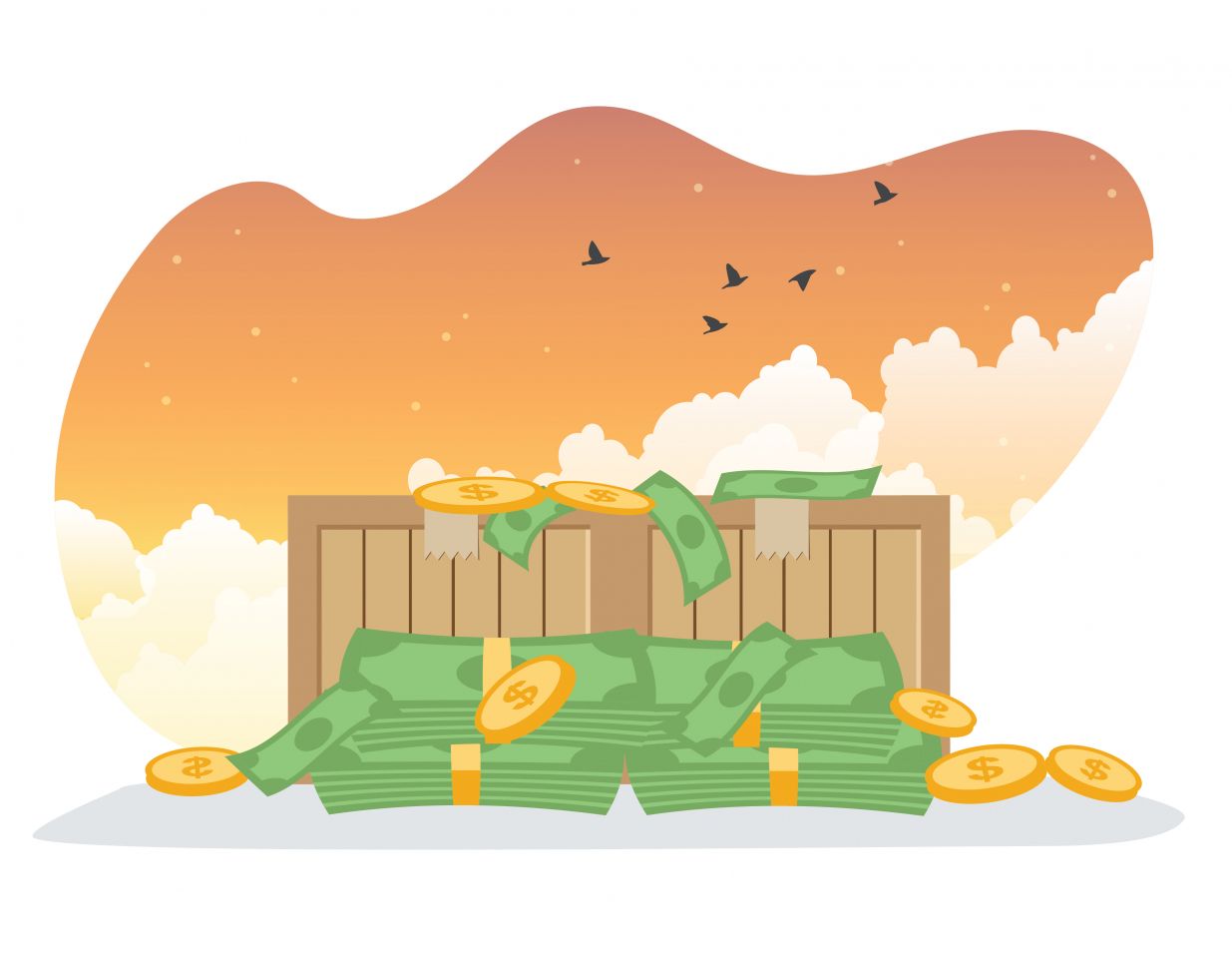What is commodity-backed money?

Commodity-backed money means the currency being used in a nation can be directly exchanged for a specific commodity.
Key takeaways:
-
Commodity-backed money is a type of currency guaranteed by a physical commodity, such as gold or silver.
-
There are several types of commodity-backed money, including, gold standard, silver standard, bi-metalic standard and commodity reserve currency.
-
Commodity-backed money can help promote price stability and reduce inflation, as the value of the currency is linked to the value of a physical commodity. But Commodity-backed money can limit a government's ability to manage its currency in response to economic changes.
Commodity-backed money explained
There are several types of commodity-backed money, including:
-
Gold standard. Under the gold standard, the value of a currency is directly linked to a specific amount of gold. Countries that use the gold standard allow for the exchange of currency for gold at a fixed rate.
-
Silver standard. This is similar to the gold standard in that the value of a currency is directly linked to a specific amount of silver.
-
Bi-metallic standard. In this system, a currency is backed by two metals, usually gold and silver, with fixed exchange rates between them.
-
Commodity reserve currency. Under this system, a currency is backed by a basket of commodities, rather than a single one.
-
Petrodollar. This is a type of currency that is used by countries to trade oil. The value of the currency is backed by the amount of oil reserves that the country possesses.

Advantages of commodity-backed money
-
Stability. Commodity-backed money can help promote price stability and reduce inflation, as the value of the currency is linked to the value of a physical commodity.
-
Trustworthiness. Commodity-backed money can help build trust in the currency and the financial system. This can provide individuals and businesses with greater confidence in the currency, and therefore more willing to hold and invest in it.
-
Liquidity. Commodity-backed money can be highly liquid, as it can be exchanged for the physical commodity at any time. This can make it easier for individuals and businesses to quickly convert their currency into a physical asset, which can be particularly useful in times of economic uncertainty or instability.
Disadvantages of commodity-backed money
-
Limited flexibility. Commodity-backed money can limit a government’s ability to manage its currency in response to economic changes as the value of the currency is directly linked to the value of the physical commodity.
-
Vulnerability to supply shocks. Commodity-backed money is vulnerable to supply shocks of the underlying commodity, which can impact the value of the currency. For example, if a country’s currency is backed by gold and there is a sudden decrease in the global supply of gold, the value of the currency may be negatively impacted.
-
High storage and transportation costs. Commodity-backed money requires the storage and transportation of physical commodities, which can be costly and logistically challenging.
Conclusion
Commodity-backed money is a type of currency guaranteed by a physical commodity, such as gold or silver. The idea behind commodity-backed money is that the currency is backed by something tangible, which provides stability and confidence in the currency.
In the past, commodity-backed money was common. Today, most countries use fiat currencies that are not backed by a specific commodity, but some still hold reserves of commodities such as gold as a store of value.
While commodity-backed money has the advantage of being backed by a tangible asset that provides stability, it also has some disadvantages. For example, the value of the currency is tied to the value of the underlying commodity, which can be subject to fluctuations and instability.
FAQs
What is commodity backed money in simple terms?
Commodity-backed money is a type of currency that is guaranteed by a physical commodity, such as gold or silver.
What is an example of commodity money?
Commodity-backed money types are gold standard. Under the gold standard, the value of a currency is directly linked to a specific amount of gold. Another example of commodity money is the silver standard. Which is similar to the gold standard in that the value of a currency is directly linked to a specific amount of silver.
What is the difference between fiat money and commodity backed money?
The main difference between fiat money and commodity-backed money is that fiat money is not backed by a physical commodity, whereas commodity-backed money is guaranteed by a specific commodity.
Fiat money is a type of currency that is declared legal tender by a government, but it has no intrinsic value and is not backed by any physical commodity. Its value is determined by the supply and demand for the currency and the trust people have in the government or central bank that issues it. Examples of fiat money include the US dollar, euro, and yen.
Is Bitcoin an example of commodity money?
Bitcoin is not an example of commodity money, as it is not backed by a physical commodity. Rather, Bitcoin is a form of digital currency that operates on a decentralised network, and its value is determined by the market forces of supply and demand.
What countries have commodity-backed money?
Most countries today do not have commodity-backed money, and instead have fiat currencies that are not backed by a specific commodity. However, some countries still hold significant reserves of commodities such as gold, which they use to back their currency.
Some smaller countries use commodity-backed currencies, such as the Venezuelan bolívar, which is backed by gold and foreign currency reserves, and the Libyan dinar, which is backed by the country’s oil reserves. However, these currencies are not widely traded on the international market and are subject to instability and fluctuations in commodity prices.